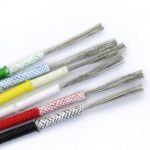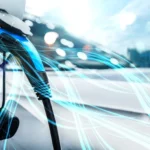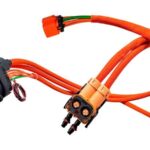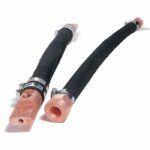As electric vehicles (EVs) continue to evolve, so does the technology behind their charging systems. One of the biggest challenges in DC fast charging is managing heat — high currents generate significant thermal buildup, which can affect safety and efficiency.
This has led to two main types of cooling systems in EV charging cables: air cooled and liquid cooled.
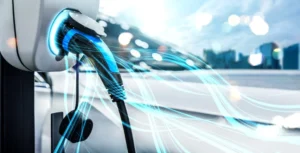
Liquid vs Air Cooled EV Charging Cable
So, what’s the difference between these two technologies, and which one is right for your application? Let’s break it down.
1. Understanding Cable Cooling in EV Charging
When charging at high power (250 kW or above), electrical resistance causes heat buildup in both the cable and connector.
Without proper cooling, this heat can:
Limit charging current, reducing speed
Cause overheating or damage
Reduce overall efficiency and cable lifespan
That’s why modern high-power charging (HPC) cables integrate cooling systems to maintain safe operating temperatures.
2. What Is an Air Cooled EV Charging Cable?
✅ Definition
An air cooled EV charging cable uses forced air circulation to remove heat from the conductor and connector. Small fans or ventilation ducts are integrated into the charging system to help dissipate the heat generated during operation.
⚙️ Characteristics
Typical current range: 200A–300A DC
Simpler system with no liquid channels or pumps
Requires larger cable diameter to manage resistance and heat
Common in moderate-speed DC chargers and older fast-charging stations
🧩 Advantages
Lower cost and simpler maintenance
No risk of coolant leakage
Works well in mild temperature environments
⚠️ Limitations
Lower current capacity
Bulky and heavier cables
Reduced charging efficiency for ultra-fast charging
3. What Is a Liquid Cooled EV Charging Cable?
✅ Definition
A liquid cooled EV charging cable circulates a coolant (typically a water-glycol mixture) through channels within the cable and connector. The fluid absorbs heat and transfers it away from critical components, enabling much higher current flow.
⚙️ Characteristics
Supports 500A to 600A DC continuous current
Uses liquid circulation pumps, sensors, and heat exchangers
Smaller conductor diameter due to better heat removal
Ideal for ultra-fast DC charging (up to 600 kW)
🧩 Advantages
Compact and lightweight despite high power
Maintains safe temperatures even under heavy load
Enables ultra-fast charging times
Longer cable and connector lifespan
⚠️ Limitations
More complex system requiring coolant management
Slightly higher cost and maintenance needs
4. Liquid vs Air Cooled EV Charging Cable: Side-by-Side Comparison
| Feature | Air Cooled Cable | Liquid Cooled Cable |
|---|---|---|
| Cooling Method | Forced air circulation | Liquid coolant (water-glycol) |
| Current Capacity | Up to 300A | Up to 600A |
| Charging Speed | Standard DC fast charging | Ultra-fast DC charging |
| Cable Size | Larger and heavier | Smaller and more flexible |
| Maintenance | Low | Moderate (coolant system) |
| Operating Temperature | Limited cooling efficiency | Stable temperature control |
| Typical Use | Public DC chargers (50–150 kW) | HPC chargers (250–600 kW) |
| Cost | Lower | Higher, but more efficient |
5. Which One Should You Choose?
Your choice depends on your charging requirements:
💡 Air Cooled Cable:
Ideal for mid-range charging stations where cost-efficiency and simplicity are key. Suitable for standard DC fast chargers below 150 kW.⚡ Liquid Cooled Cable:
Perfect for ultra-fast EV charging (250 kW and above), where high current and safety are essential. Recommended for public HPC networks, EV fleet charging, and commercial fast-charging infrastructure.
Conclusion
Both air cooled and liquid cooled EV charging cables play crucial roles in today’s charging ecosystem.
While air-cooled solutions remain practical for mid-power systems, liquid-cooled cables are the clear choice for high-power, next-generation EV charging infrastructure, delivering superior performance, safety, and charging speed.
👉 Looking for high-performance EV charging cables?
Contact TOT Wire & Cable today to get technical specifications or request a quote for liquid cooled EV charging cables tailored to your fast-charging applications.

